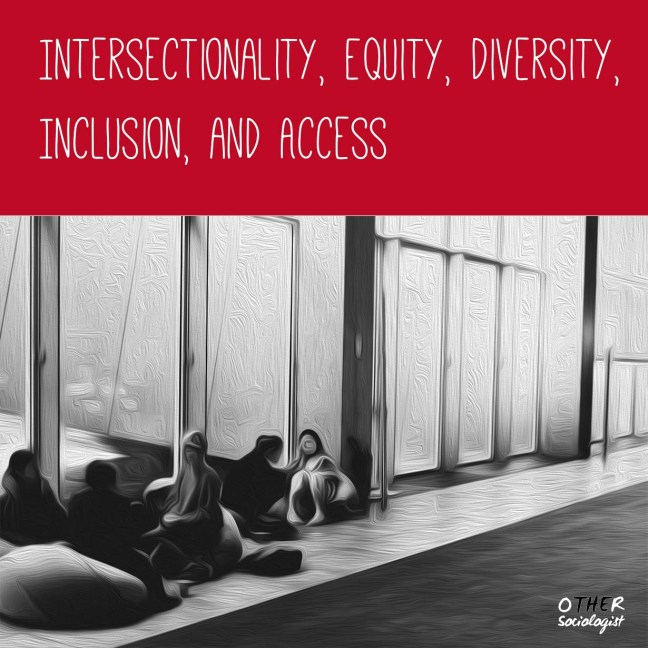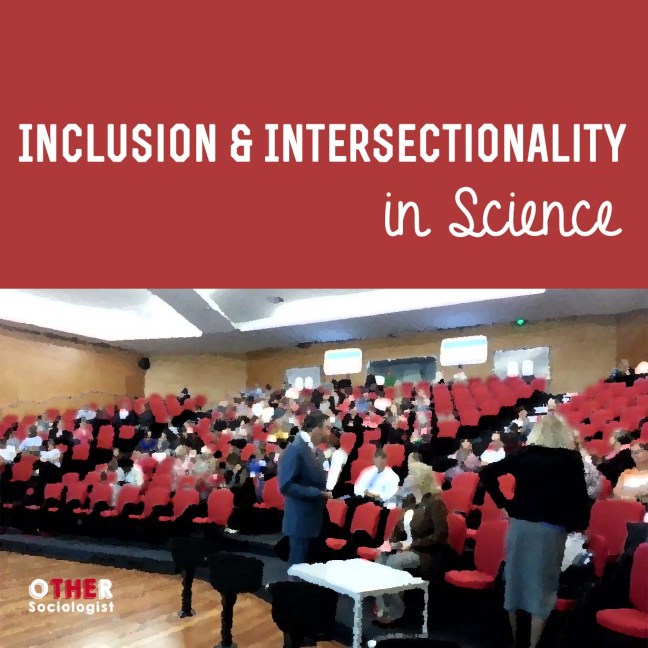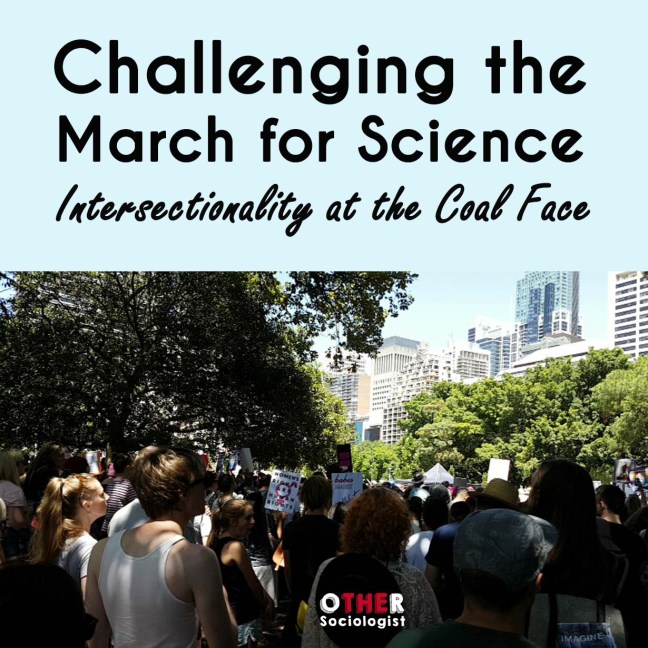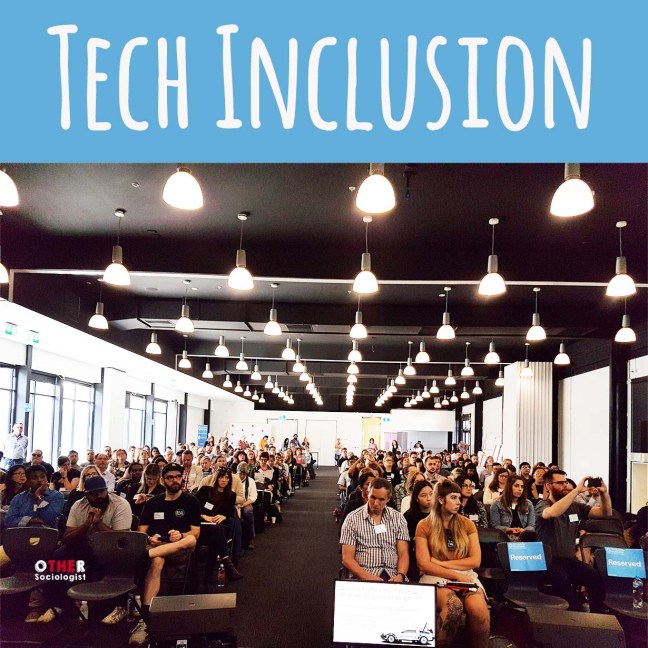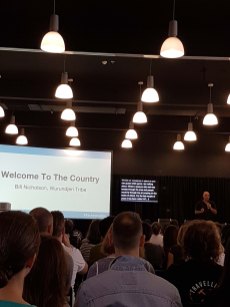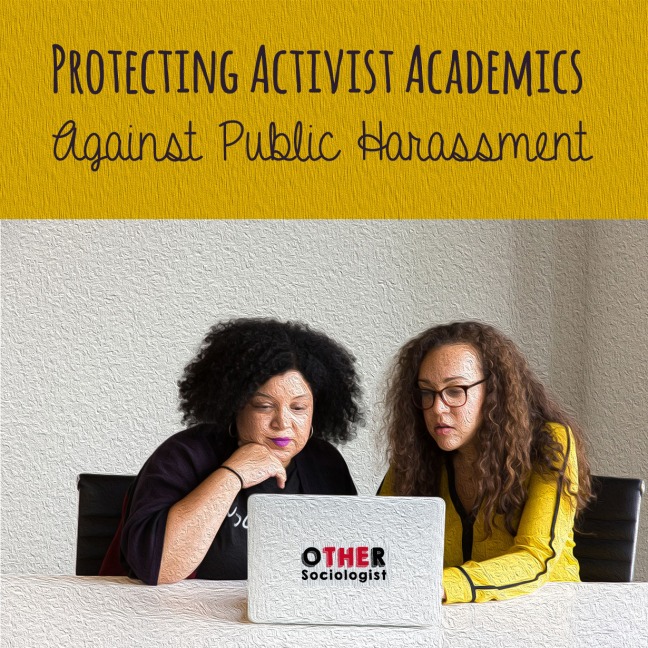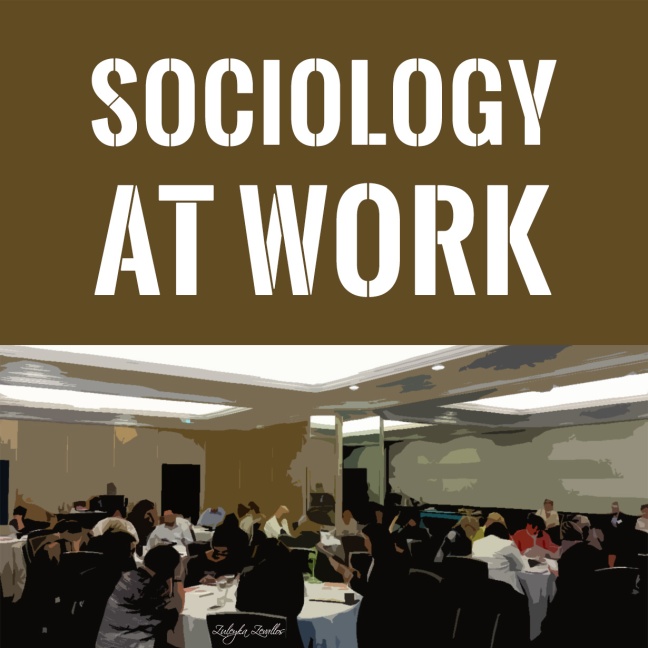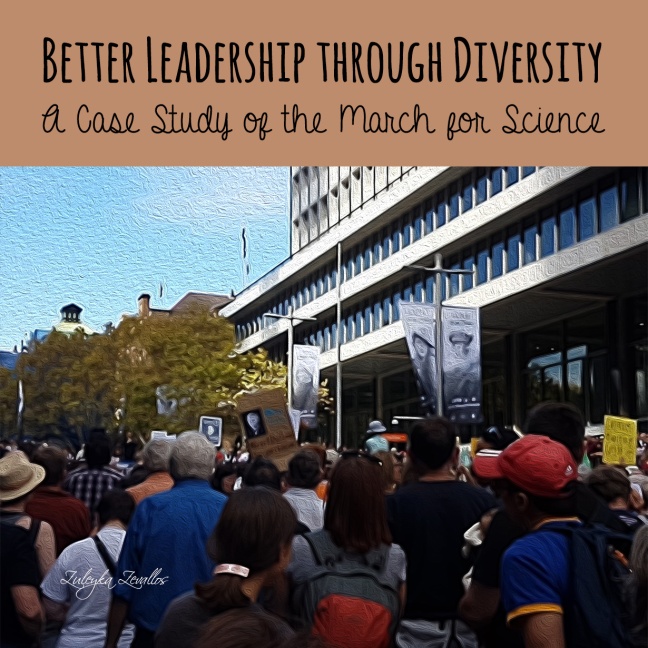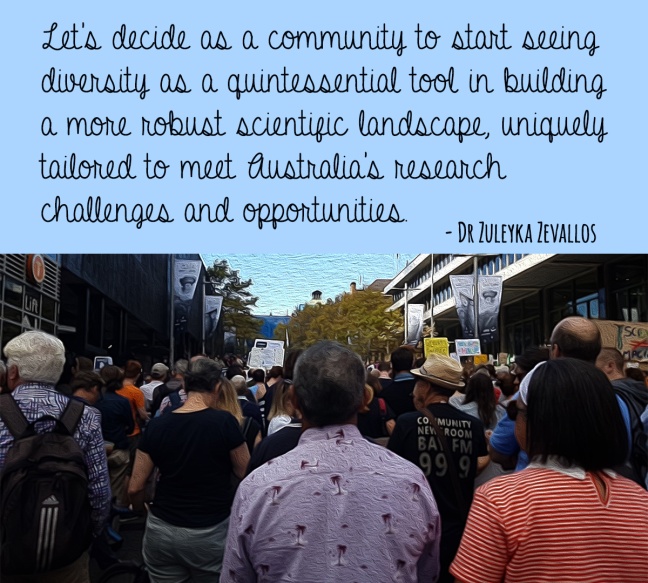This is the first of two talks I was invited to give in New Zealand in September 2017. It is fitting to share this today, on the second March for Science event happening in over 200 cities around the world, including Australia. I have throughly documented the equity and diversity issues with the last year’s March for Science. This talk was a reflection on the problems and costs of this volunteering work that I and many other people of colour, disabled scientists, and lesbian, gay, bisexual, transgender, queer, intersex and asexual (LGBTQIA) researchers did to try to make the marches more inclusive. I note that Black women scientists bore the worst abuse both within the March for Science movement and by the public advocacy they did.
I’m afraid that discussions this year were no better. Last week, I was one of a few Australian women reflecting on issues from last year’s March for Science, and the lack of transparency over plans for this year’s event. On my Twitter threads, in discussion with other minority women, organisers from the Sydney, Melbourne and Canberra marches reproduced many of the problematic arguments detailed here, all over again.
Some of the organisers of this year’s march blamed the lack of diversity amongst the committees and speakers on the low number of volunteers, while also insinuating that minority people should have volunteered in greater numbers. I noted that the same issue was raised last year to deflect minority researchers’ concerns with equity and diversity. In fact, the minorities who did volunteer and offered countless hours of free advice and public resources (as in my case) were met with anger. Women of colour were especially made to feel unsafe and unwelcome. Other organisers of this year’s march said they valued diversity but didn’t know how to improve things. I noted that there had been a plethora of free resources published last year as well as other resources that exist on how to make events more inclusive.
There is really no excuse for reproducing inequality in science or academic events, and in other spheres.
So with all these wounds freshly scratched opened, below are the notes for the talk that I gave at the University of Auckland, titled: Challenging the March for Science – intersectionality work at the coal face. I was a guest of the The Women in Science Network. Throughout this post, I provide tips for how to make science events (and other events and protests) more inclusive. At the end, I include a visual resource that summarises some tips for best practice that you can print off as a reminder. Feel free to put it up at your home office, work, school, university, or any other community space!


